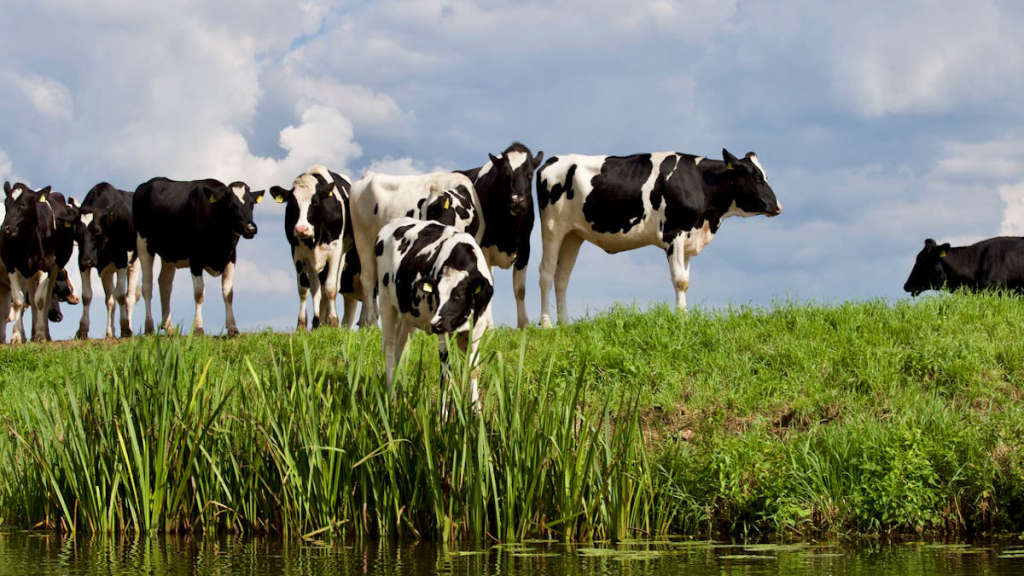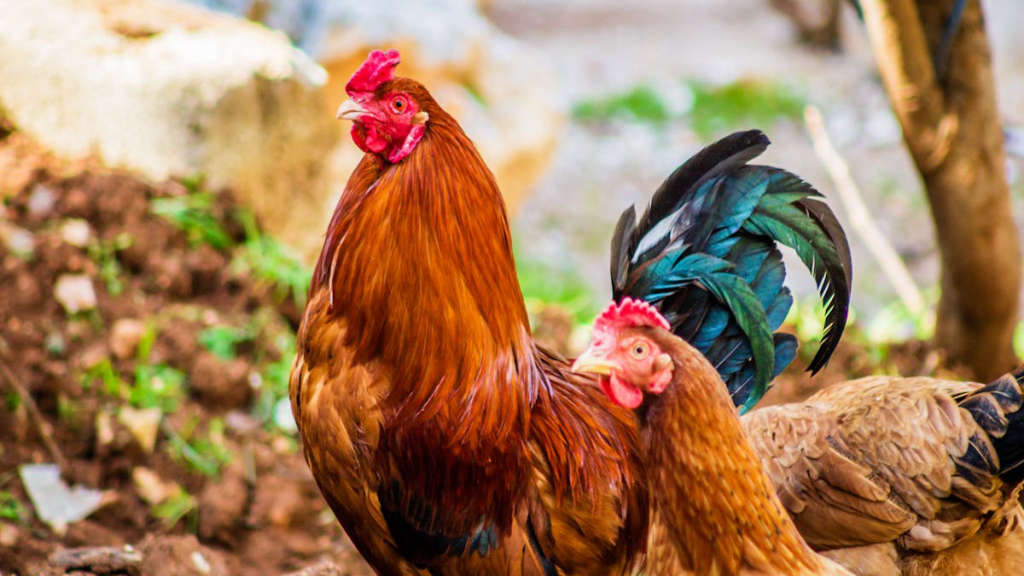The world of farming is undergoing a significant transformation, driven by innovative technologies and advanced practices. In 2023, the realm of livestock management is no exception. Modern livestock equipment is reshaping how farmers care for their animals, enhancing productivity and welfare. From automated feeding systems to precision health monitoring, these innovations not only improve efficiency but also make farming a more humane endeavor. As we explore the latest advancements, it becomes clear that the future of agriculture is bright, with farmers equipped better than ever to meet the challenges ahead.
Main Points
- New technologies streamline animal care and enhance welfare.
- Automation in feeding and monitoring systems increases efficiency.
- Innovative tools support sustainability and environmental responsibility.

Harnessing Technology: Smart Equipment Transforming Livestock Management
In recent years, the agricultural world has witnessed a remarkable revolution, particularly in livestock management. The integration of smart equipment has not only enhanced productivity but also improved the welfare of animals. As farmers seek innovative solutions, technology is stepping in to address their challenges. This transformation is not just about employing advanced tools; it’s about changing the very nature of how we interact with our livestock.
The Role of Smart Equipment
Smart equipment encompasses a variety of technologies. From automated feeding systems to health monitoring devices, these tools work in harmony to ensure optimal care for livestock. The adoption of these technologies can lead to several significant benefits:
- Increased Efficiency: Automated systems reduce the time and labor involved in daily operations, allowing farmers to focus on other essential tasks.
- Real-Time Data: Smart devices provide invaluable insights into the health and productivity of animals. This data can lead to better decision-making.
- Improved Animal Welfare: Monitoring systems can detect health issues early, ensuring timely interventions that promote better welfare.
Challenges and Considerations
Despite these advantages, the journey towards deploying smart technologies is not without obstacles. Often, the initial investment in smart equipment can be daunting for many farmers. Additionally, integrating new technologies into existing workflows requires careful planning and consideration. Moreover, training staff to effectively use these tools remains a critical factor that cannot be overlooked. This is where confusion often arises; as technology becomes more sophisticated, some may find it challenging to adapt to new methods.
The Future Landscape
Looking ahead, it’s clear that the future of livestock management lies in the thoughtful application of technology. Farmers must embrace this change while remaining wary of the potential pitfalls. As we explore this landscape, it becomes evident that the journey is not just about technology but also about maintaining a deep connection with livestock. Innovations should support the overarching goal of sustainable and ethical farming practices.
In conclusion, leveraging smart equipment can profoundly transform livestock management. By embracing these technologies, farmers can enhance efficiency, improve animal welfare, and ultimately contribute to a more sustainable agricultural future. But as with any significant change, it requires openness to learning and adaptation. In the end, navigating the complexities of this transformation is essential for success.

Sustainable Solutions: Eco-Friendly Innovations in Livestock Equipment for Modern Farms
In today’s agricultural landscape, farmers increasingly seek sustainable practices that not only enhance productivity but also protect the environment. The livestock industry, in particular, has seen significant advancements with the introduction of eco-friendly equipment. These innovations aim to minimize waste, reduce carbon footprints, and promote animal welfare. In this context, let’s explore some of the most promising solutions transforming modern farming.
Innovative Breeding Technologies
One cannot underestimate the role of technology in revolutionizing livestock breeding. For instance, genetic selection and artificial insemination techniques have advanced so much that they now allow farmers to produce sustainable herds tailored for efficiency and resilience. These technologies enable the selection of traits that improve feed efficiency and disease resistance, which are critical elements in sustainable farming. However, the implementation of such technologies can be intricate, leaving farmers grappling with various options.
Water Conservation Measures
Water is an essential resource in farming, yet its overuse can lead to severe environmental implications. Modern farms are adopting eco-friendly watering systems, such as solar-powered pumps and rainwater harvesting mechanisms. These systems not only ensure a consistent water supply but also significantly reduce operational costs. Nevertheless, transitioning to such systems may appear daunting for some farmers due to the initial investment required. Balancing high-tech solutions with traditional practices stands as a pathway many are exploring.
Renewable Energy Sources
Integrating renewable energy sources is another vital strategy for modern farms. Many livestock operations are beginning to harness solar and wind energy for their day-to-day needs. This shift not only lowers dependence on fossil fuels but also enhances overall profitability through energy conservation. Yet, the variability of renewable energy can create uncertainty, making it essential for farmers to assess their specific requirements before fully committing. The journey towards a fully sustainable energy model can be rife with challenges, but the long-term benefits often outweigh the initial hurdles.
Waste Management Innovations
Effective waste management is paramount for sustainable livestock farming. Techniques such as anaerobic digestion are being implemented to convert manure into biogas, providing a clean energy source while minimizing environmental impact. Additionally, this process yields nutrient-rich fertilizers, showcasing a circular approach that some farms aspire to achieve. However, the complexity involved in setting up such systems may deter some farmers from fully engaging with these innovations. Understanding the long-term advantages can help break down such barriers.
Conclusion
As the modern farming sector adapts to the growing demand for sustainable practices, eco-friendly innovations in livestock equipment are crucial. By embracing advanced breeding technologies, water conservation measures, renewable energy sources, and waste management strategies, farmers can contribute to a more sustainable future. Despite the potential hurdles, these innovations offer a transformative pathway. With the right knowledge and resources, the agricultural community can not only meet production needs but also protect our planet for generations to come.

Enhancing Animal Welfare: The Impact of Advanced Livestock Tools on Herd Health and Productivity
The well-being of livestock is paramount in maintaining not only the health of animals but also the productivity of farms. In recent years, advancements in technology have given rise to a new era of livestock management tools that are helping to enhance animal welfare. As a result, both farmers and their herds benefit, creating a symbiotic relationship that fosters healthy, productive environments. But how exactly do these tools influence herd health? Let’s delve deeper.
Technological Innovations in Livestock Management
With the rise of smart farming techniques, various tools have become integral in monitoring the health of livestock. For instance, wearable devices are now being utilized to track vital signs and behavioral patterns. These smart gadgets provide real-time data to farmers, enabling them to make timely decisions regarding an animal’s health. Consequently, identifying issues before they escalate is now more feasible, ensuring that livestock receive the attention they need promptly. However, one might wonder if reliance on technology might overshadow traditional farming practices, but that isn’t necessarily the case.
Impact on Health and Productivity
Utilizing advanced tools to monitor herd health can lead to significant boosts in overall productivity. When livestock are healthy, farm yields improve. Disease outbreaks can be managed efficiently, reducing losses and ensuring a steady supply of quality products. The interconnected nature of animal health and farm output means that investment in tools aimed at animal welfare pays dividends in productivity. Yet, there’s complexity here; the challenge remains in ensuring that farmers can adapt to these rapidly changing technologies while keeping costs manageable.
Challenges and Future Considerations
Despite the clear benefits, the journey towards enhanced animal welfare through advanced livestock tools is not without its challenges. Farmers often face the dilemma of selecting the right tools suited for their specific herd needs. Moreover, the training required to effectively use new technologies can be resource-intensive. Even so, the future looks promising. As innovations continue to develop, there will be more options available that cater to diverse farming environments and practices.
In conclusion, the implementation of advanced livestock tools holds immense potential to enhance herd health and productivity, ultimately leading to improved welfare for livestock. Farmers, while facing certain challenges, are better equipped than ever to foster a healthy, productive future for their herds. Striking a balance between technology and traditional methods will be the key in paving the way forward. Thus, as we embrace the advancements in this field, we must also remain mindful of the careful integration of these tools into the fabric of farming life.
Conclusion
In conclusion, the importance of properly selecting livestock equipment cannot be overstated. Investing in high-quality gear not only enhances productivity but also contributes to the overall well-being of the animals. As we strive to create more sustainable farming practices, our choices in equipment can significantly impact both efficiency and animal health. Therefore, farmers should prioritize their equipment decisions, ensuring they align with the specific needs of their livestock. Ultimately, making thoughtful choices in this area fosters a more harmonious relationship between humans and animals on the farm.
Frequently Asked Questions
What types of livestock equipment are essential for farmers?
Essential livestock equipment includes feeding troughs, waterers, fencing, handling systems, and bedding equipment. These tools help ensure the health and well-being of the animals.
How often should livestock equipment be maintained?
Livestock equipment should be inspected and maintained regularly, ideally on a monthly basis. This helps prevent breakdowns and ensures the equipment remains safe and functional.
Where can I buy quality livestock equipment?
Quality livestock equipment can be purchased from agricultural supply stores, online marketplaces specializing in farming products, or directly from manufacturers. Always check reviews and warranties before purchasing.